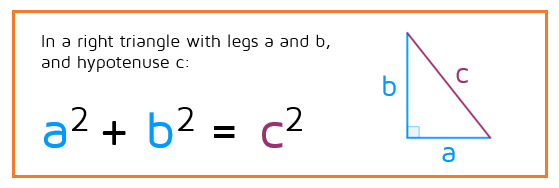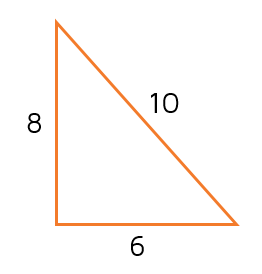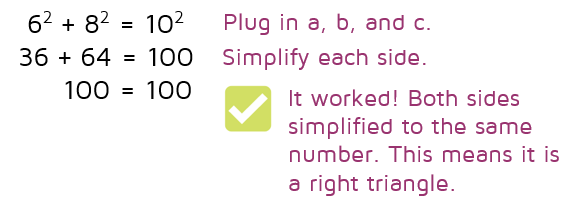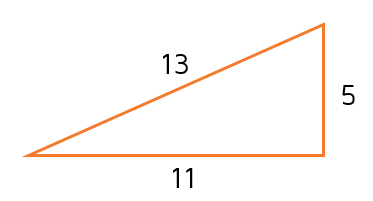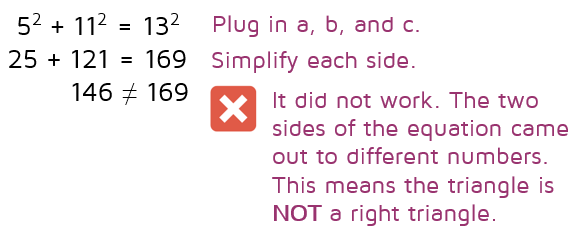|
|
Notice that the order has been switched! In the Pythagorean Theorem, the hypothesis (the part after the "If") is that it's a right triangle with legs a and b and hypothesis c. The conclusion (the part after the "then") is that a-squared plus b-squared equals c-squared. The converse is written in the reverse order.
Notice that the order is switched around. In the original Pythagorean Theorem, you know from the start that the triangle is a right triangle and then you can use a-squared plus b-squared equals c-squared to find a missing side. In the converse, you start by knowing that a-squared plus b-squared equals c-squared, and then you can tell that it's a right triangle.
If you already know that the triangle is a right triangle, you can use the original Pythagorean Theorem to find a missing side. The converse is used the other way around. If you know all three sides of a triangle, you can use the converse of the Pythagorean Theorem to determine if the triangle is a right triangle.
When you're using the converse, you will already know all three sides of the triangle and you'll be asked if the triangle is a right triangle. If it is a right triangle, the longest side would be the hypotenuse so you'll choose the largest number for c. The smaller two numbers will be a and b, it doesn't matter which one you call a and which one you call b. You plug all three numbers into a-squared plus b-squared equals c-squared and see if it works! If both sides of the equation come out to the same number, then you know the triangle is a right triangle. If they come out to different numbers, you know that it's not a right triangle.
Steps to Using the Converse of the
Pythagorean Theorem
In this type of problem, you'll be given the three sides of a triangle and you need to figure out if it's a right triangle. How do you know if it is a right triangle? You use the converse of the Pythagorean Theorem. Here are the steps you'll follow:
Example 1
Determine if the triangle below is a right triangle.
This sure looks like a right triangle, but never just assume a triangle has a 90 degree angle by just looking at it. It may have a 89 degree angle or a 91 degree angle and just look awfully close to 90 degrees. We need to use the converse of the Pythagorean Theorem to tell for sure if it has a right angle.
Step 1: Determine a, b, and c. If this was a right triangle, the longest side would be the hypotenuse, so we need to use 10 for c. The two shortest sides 6 and 8 will be the values for a and b.
Step 2: Plug in a, b and c.
Step 3: Determine if the sides form a right triangle. Both sides of the equation simplified to 100. When both sides come out to the same number, it works! A triangle with sides 6, 8, and 10 do form a right triangle.
Example 2
Determine if the triangle below is a right triangle.
Again, don't assume this is a right triangle just because it looks like one. To verify if a triangle is a right triangle, we need to use the converse of the Pythagorean Theorem to make sure.
Step 1: Use the longest side for c: c = 13. The two shorter sides are a and b.
Step 2: Plug in the values and see if they work.
Step 3: Determine if the triangle is a right triangle. The two sides of the equation simplified to different numbers. This means the conditions of the converse were not met, so the triangle is not a right triangle.
Practice
Ready to try some problems on your own? Click the START button below to take a practice quiz.
